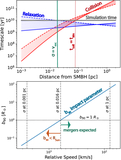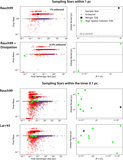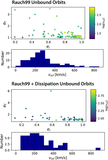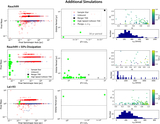Image Details

Caption: Figure 5.
We show a simulation that uses the Rauch99 prescription that includes relaxation. There are 4000 sample stars in this simulation. About 0.7% became unbound, and one became a TDE immediately postcollision. Some other collision-affected stars also became TDEs; collisions would have affected their orbital evolution, but it was the relaxation prescription that pushed them into the tidal radius. The symbols are consistent with those in our other figures, with the addition of the dark green stars to represent TDEs from our relaxation prescription. Indicated by the gray shaded region, we place a caveat on the dark green stars (relaxation TDEs) with a final semimajor axis within 0.001 pc, which are also the TDEs with the shortest orbital period. The applicability of our relaxation prescription within this region is uncertain.
Copyright and Terms & Conditions
© 2025. The Author(s). Published by the American Astronomical Society.








